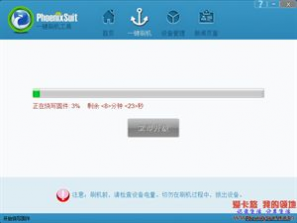一 : cubieboard学习笔记
入手开发板,刷机肯定是少不了的,就像我们平时刷安卓手机一样。开发板也有很多适配的固件。比如Cubieboard3 Cubietruck就有安卓,debian,ubuntu等定制的固件。








二 : AudioToolbox学习笔记(转)
之前公司做的是音乐播放器,用到了AudioToolbox这个音频接口,总结下,希望对需要的朋友有帮助。[www.61k.com]AudioToolbox这个库是C的接口,偏向于底层,用于在线流媒体音乐的播放,可以调用该库的相关接口自己封装一个在线播放器类,AudioStreamer是老外封装的一个播放器类,有兴趣的朋友可以研究下。
其实IOS库中有两个可以播放在线音乐的播放器类,AVPlayer和MPMusicPlayerController
这两个做简单的播放还不错,但是如果要做专业的音乐播放项目,功能还不够强大,例如:边听边存、断点续传、播放事件等等都无法满足。一下是以前做的笔记,仅供参考
播放流程图: 
• 数据类型
1.AudioFileStreamID 文件流
2.AudioQueueRef 播放队列
3.AudioStreamBasicDescription 格式化音频数据
4.AudioQueueBufferRef 数据缓冲
• 回调函数
1.AudioFileStream_PacketsProc 解析音频数据回调
2.AudioSessionInterruptionListener 音频会话被打断
3.AudioQueueOutputCallback 一个AudioQueueBufferRef播放完
• 主要函数
0.AudioSessionInitialize (NULL, NULL, AudioSessionInterruptionListener, self);
初始化音频会话
1.AudioFileStreamOpen(
(void*)self,
&AudioFileStreamPropertyListenerProc,
&AudioFileStreamPacketsProc,
0,
&audio_file_stream);
建立一个文件流AudioFileStreamID,传输解析的数据
2.AudioFileStreamParseBytes(
audio_file_stream,
datalen,
[data bytes],
kAudioFileStreamProperty_FileFormat);
解析音频数据
3.AudioQueueNewOutput(&audio_format, AudioQueueOutputCallback, (void*)self, [[NSRunLoop currentRunLoop] getCFRunLoop], kCFRunLoopCommonModes, 0, &audio_queue);
创建音频队列AudioQueueRef
4.AudioQueueAllocateBuffer(queue, [data length], &buffer);
创建音频缓冲数据AudioQueueBufferRef
5.AudioQueueEnqueueBuffer(queue, buffer, num_packets, packet_descriptions);
把缓冲数据排队加入到AudioQueueRef等待播放
6.AudioQueueStart(audio_queue, nil); 播放
7.AudioQueueStop(audio_queue, true);
AudioQueuePause(audio_queue); 停止、暂停
• 断点续传
1。在http请求头中设置数据的请求范围,请求头中都是key-value成对
key:Range value:bytes=0-1000
[request setValue:range forHTTPHeaderField:@"Range"];
可以实现,a.网络断开后再连接能继续从原来的断点下载
b.可以实现播放进度可随便拉动
扩展:coreaudiotoolbox.dll / audiotoolbox / ios audiotoolbox
三 : WPF and Silverlight 学习笔记(六):WPF窗体
一、窗体类
在Visual Studio和Expression Blend中,自定义的窗体均继承System.Windows.Window类(类型化窗体)。[www.61k.com)定义的窗体由两部分组成:
1、XAML文件
1: <Window
2: xmlns="http://schemas.microsoft.com/winfx/2006/xaml/presentation"
3: xmlns:x="http://schemas.microsoft.com/winfx/2006/xaml"
4: x:Class="WpfWindow.BasicWindow"
5: x:Name="Window"
6: Title="BasicWindow"
7: Width="300" Height="200">
8: <Canvas>
9: <Button x:Name="btnMessage" Width="79" Height="24" Content="OK"
10: Canvas.Left="172" Canvas.Top="93" Click="btnMessage_Click"/>
11: <TextBox x:Name="txtValue" Width="215" Height="25"
12: Canvas.Left="36" Canvas.Top="48" Text="" TextWrapping="Wrap"/>
13: </Canvas>
14: </Window>
2、后台代码文件
1: using System;
2: using System.Windows;
3:
4: namespace WpfWindow
5: {6: public partial class BasicWindow : Window
7: {8: public BasicWindow()
9: {10: this.InitializeComponent();
11: }
12:
13: private void btnMessage_Click(object sender, System.Windows.RoutedEventArgs e)
14: {15: txtValue.Text = "Hello World";
16: }
17: }
18: }
也可以将后台代码放在XAML文件中,上面的例子可以改写为:
1: <Window
2: xmlns="http://schemas.microsoft.com/winfx/2006/xaml/presentation"
3: xmlns:x="http://schemas.microsoft.com/winfx/2006/xaml"
4: x:Class="WpfWindow.BasicWindow"
5: x:Name="Window"
6: Title="BasicWindow"
7: Width="300" Height="200">
8: <Canvas>
9: <Button x:Name="btnMessage" Width="79" Height="24" Content="OK"
10: Canvas.Left="172" Canvas.Top="93" Click="btnMessage_Click"/>
11: <x:Code><![CDATA[
12: void btnMessage_Click(object sender, System.Windows.RoutedEventArgs e)
13: {14: txtValue.Text = "Hello World";
15: }
16: ]]>
17: </x:Code>
18: <TextBox x:Name="txtValue" Width="215" Height="25"
19: Canvas.Left="36" Canvas.Top="48" Text="" TextWrapping="Wrap"/>
20: </Canvas>
21: </Window>
二、窗体的生存周期
1、显示窗体
2、关闭窗体
3、窗体的激活
4、窗体的生存周期

示例程序:
XAML文件:
1: <Window x:Class="WpfWindow.WindowLifeCycle"
2: xmlns="http://schemas.microsoft.com/winfx/2006/xaml/presentation"
3: xmlns:x="http://schemas.microsoft.com/winfx/2006/xaml"
4: Title="WindowLifeCycle" Height="200" Width="300"
5: Loaded="Window_Loaded"
6: Activated="Window_Activated"
7: Deactivated="Window_Deactivated"
8: Closing="Window_Closing">
9: <Canvas>
10: <TextBlock Canvas.Right="15" Canvas.Bottom="15" Height="21" Name="txtDate"/>
11: <MediaElement Canvas.Left="89" Canvas.Top="12" Height="100" Width="100"扩展:wpf学习笔记 / silverlight 弹出窗体 / wpf silverlight
12: Name="myMedia" Source="numbers.wmv"
13: Stretch="Fill" LoadedBehavior="Manual" />
14: </Canvas>
15: </Window>
代码文件:
1: using System;
2: using System.Windows;
3:
4: namespace WpfWindow
5: {6: public partial class WindowLifeCycle : Window
7: {8: public WindowLifeCycle()
9: {10: InitializeComponent();
11: }
12:
13: // 开关变量,判断是否正在播放媒体
14: private bool isPlaying;
15:
16: private void Window_Loaded(object sender, RoutedEventArgs e)
17: {18: // 窗体加载时,显示当前日期及开始播放媒体
19: txtDate.Text = DateTime.Now.ToString("yyyy-MM-dd");20:
21: myMedia.Play();
22: isPlaying = true;
23: }
24:
25: private void Window_Activated(object sender, EventArgs e)
26: {27: // 如果窗体被激活,则继承播放媒体
28: if (!isPlaying)
29: {30: myMedia.Play();
31: isPlaying = true;
32: }
33: }
34:
35: private void Window_Deactivated(object sender, EventArgs e)
36: {37: // 如果窗体失去焦点,则暂停播放媒体
38: if (isPlaying)
39: {40: myMedia.Pause();
41: isPlaying = false;
42: }
43: }
44:
45: private void Window_Closing(object sender, System.ComponentModel.CancelEventArgs e)
46: {47: // 点击窗体的“关闭”按钮,询问用户是否退出程序
48:
49: string message = "Quit the application?";
50: string title = "System Information";
51: MessageBoxButton button = MessageBoxButton.OKCancel;
52: MessageBoxImage img = MessageBoxImage.Question;
53:
54: MessageBoxResult result = MessageBox.Show(
55: message, title, button, img);
56:
57: if (result == MessageBoxResult.Cancel)
58: {59: e.Cancel = true; // 取消退出
60: }
61: }
62: }
63: }
三、其他窗体相关的属性、方法、事件
WPF窗体的详细的属性、方法、事件请参考MSDN,有很多的属性、方法、事件与Windows应用程序中System.Windows.Forms.Form类相同或近似,其中常用的一些属性、方法、事件有:
四、定义异形窗体
使用异形窗体,可以将窗体的背景设置为透明,边框设置为空,然后利用控件做出异形的窗体,例如:
XAML:
1: <Window x:Class="WpfWindow.CustomerWindow"
2: xmlns="http://schemas.microsoft.com/winfx/2006/xaml/presentation"
3: xmlns:x="http://schemas.microsoft.com/winfx/2006/xaml"
4: Title="NonRectangularWindowSample" SizeToContent="WidthAndHeight"
5: MouseLeftButtonDown="NonRectangularWindow_MouseLeftButtonDown"
6: WindowStyle="None"
7: AllowsTransparency="True"
8: Background="Transparent">
9: <Canvas Width="200" Height="200" >
10: <Path Stroke="DarkGray" StrokeThickness="2">
11: <Path.Fill>
12: <LinearGradientBrush StartPoint="0.2,0" EndPoint="0.8,1" >
13: <GradientStop Color="White" Offset="0"></GradientStop>
14: <GradientStop Color="White" Offset="0.45"></GradientStop>
15: <GradientStop Color="LightBlue" Offset="0.9"></GradientStop>
16: <GradientStop Color="Gray" Offset="1"></GradientStop>扩展:wpf学习笔记 / silverlight 弹出窗体 / wpf silverlight
17: </LinearGradientBrush>
18: </Path.Fill>
19: <Path.Data>
20: <PathGeometry>
21: <PathFigure StartPoint="40,20" IsClosed="True">
22: <LineSegment Point="160,20"></LineSegment>
23: <ArcSegment Point="180,40" Size="20,20" SweepDirection="Clockwise"></ArcSegment>
24: <LineSegment Point="180,80"></LineSegment>
25: <ArcSegment Point="160,100" Size="20,20" SweepDirection="Clockwise"></ArcSegment>
26: <LineSegment Point="90,100"></LineSegment>
27: <LineSegment Point="90,150"></LineSegment>
28: <LineSegment Point="60,100"></LineSegment>
29: <LineSegment Point="40,100"></LineSegment>
30: <ArcSegment Point="20,80" Size="20,20" SweepDirection="Clockwise"></ArcSegment>
31: <LineSegment Point="20,40"></LineSegment>
32: <ArcSegment Point="40,20" Size="20,20" SweepDirection="Clockwise"></ArcSegment>
33: </PathFigure>
34: </PathGeometry>
35: </Path.Data>
36: </Path>
37: <Label Width="200" Height="120" FontSize="15" HorizontalContentAlignment="Center" VerticalContentAlignment="Center">Drag Me</Label>
38: <Button Canvas.Left="155" Canvas.Top="30" Click="closeButtonRectangle_Click">
39: <Button.Template>
40: <ControlTemplate>
41: <Canvas>
42: <Rectangle Width="15" Height="15" Stroke="Black" RadiusX="3" RadiusY="3">
43: <Rectangle.Fill>
44: <SolidColorBrush x:Name="myAnimatedBrush" Color="Red" />
45: </Rectangle.Fill>
46: </Rectangle>
47: <Line X1="3" Y1="3" X2="12" Y2="12" Stroke="White" StrokeThickness="2"></Line>
48: <Line X1="12" Y1="3" X2="3" Y2="12" Stroke="White" StrokeThickness="2"></Line>
49: </Canvas>
50: </ControlTemplate>
51: </Button.Template>
52: </Button>
53: </Canvas>
54: </Window>
代码文件:
1: using System.Windows;
2: using System.Windows.Input;
3:
4: namespace WpfWindow
5: {6: public partial class CustomerWindow : Window
7: {8: public CustomerWindow()
9: {10: InitializeComponent();
11: }
12:
13: void NonRectangularWindow_MouseLeftButtonDown(object sender, MouseButtonEventArgs e)
14: {15: this.DragMove();
16: }
17:
18: void closeButtonRectangle_Click(object sender, RoutedEventArgs e)
19: {20: this.Close();
21: }
22: }
23: }

扩展:wpf学习笔记 / silverlight 弹出窗体 / wpf silverlight
本文标题:学习笔记-cubieboard学习笔记61阅读| 精彩专题| 最新文章| 热门文章| 苏ICP备13036349号-1